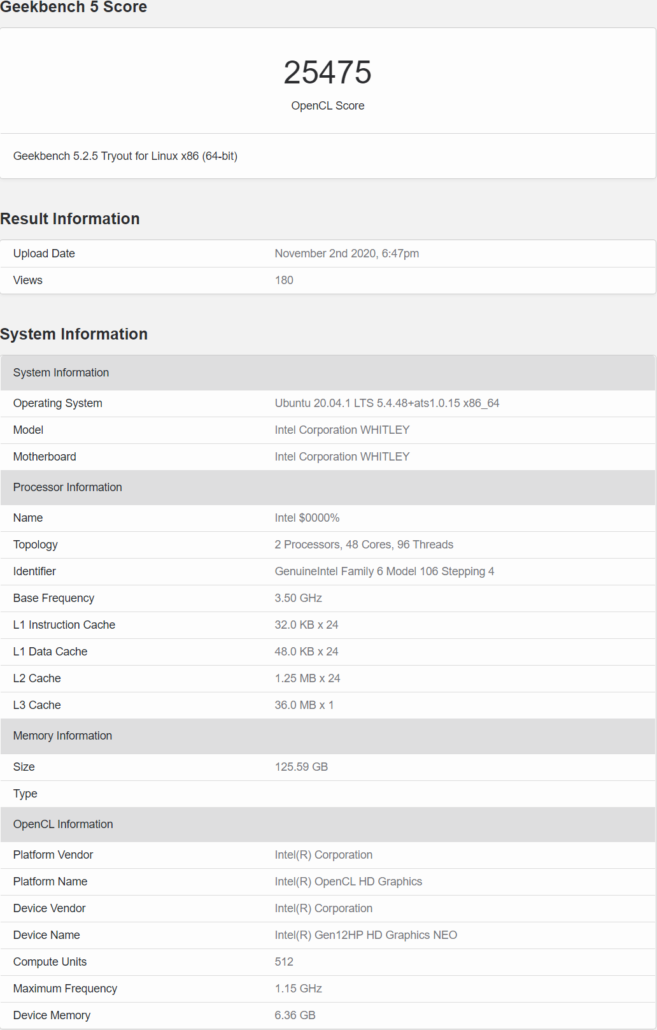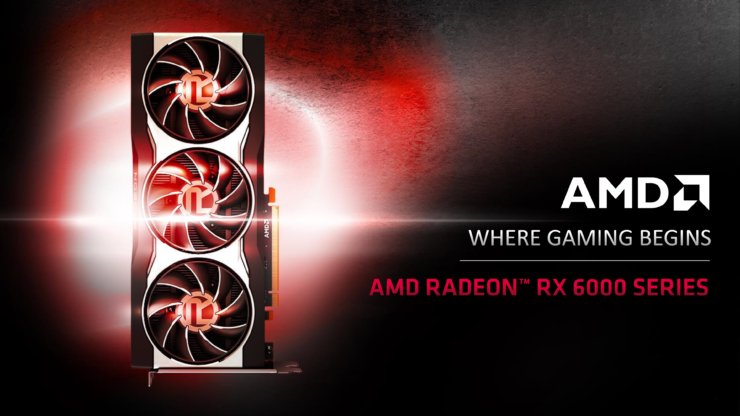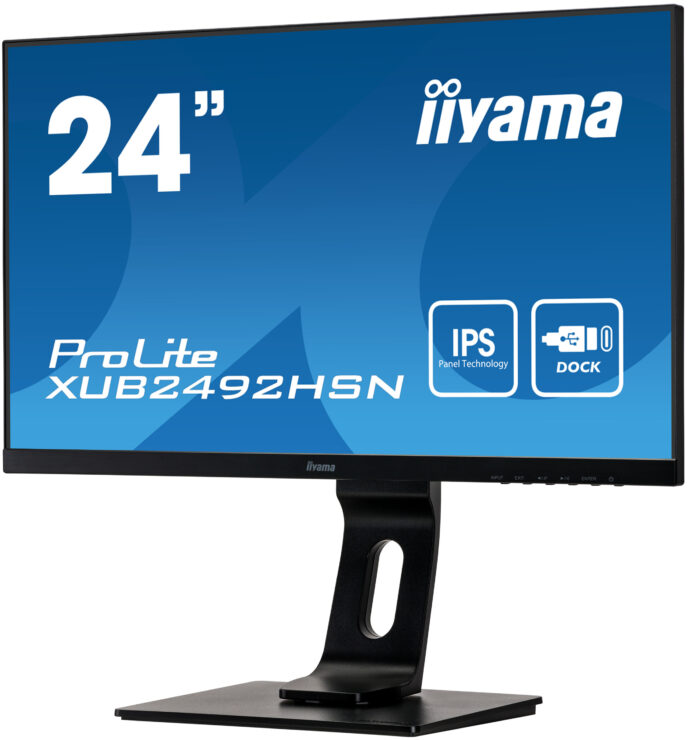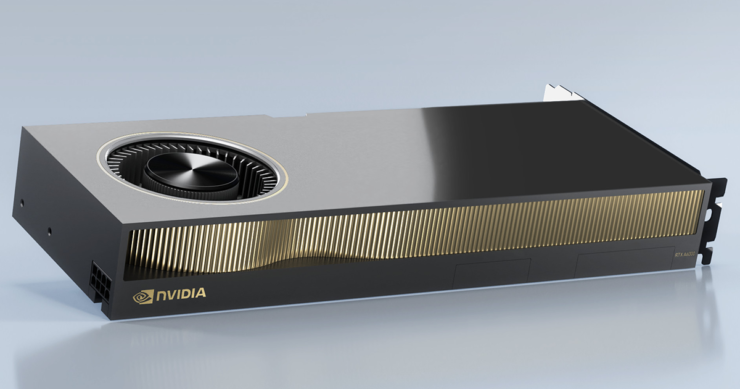Intel’s Xe-HP Powered Neo GPU Benchmarked, Features 512 Compute Units & 4096 Cores In 1-Tile Configuration

An Intel Xe-HP GPU codenamed, HD Graphics Neo, has been spotted within the Geekbench data-base along with its benchmarks. The chip which is based on Intel’s Gen 12 GPU architecture will aim at the Datacenter and AI market segment and launch sometime next year. The benchmark & listing was spotted by TUM_APISAK (via Videocardz) and shows some interesting results.
Intel Xe-HP Architecture Powered Neo GPU For Datacenters Detailed In Terms of Specifications & Benchmarks
The Intel Xe-HP “Neo” GPU was tested on an Intel Whitley platform featuring its next-gen Ice Lake-SP processors. The processor itself features 2 cores with 24 cores and 48 threads each that sum up to 48 cores and 96 threads. The CPU base clock was reported at 3.50 GHz along with 30 MB of L2 & 36 MB of L3 cache. The system also featured 128 GB of DDR4 (ECC) memory and was tested under Ubuntu 20.04.1 operating system.
The GPU specifications include 512 Compute Units or 4096 cores. Each Compute Unit on the Gen 12 GPUs consists of 8 cores. The GPU is based on a 1-Tile configuration which is the most entry-level SKU of the Intel Xe-HP lineup. The lineup goes all the way up to 2 and 4 Tiles which offer a total of 1024 CUs (8192 cores) and 2048 EUs (16,384 cores). The Xe-HP “Neo” GPU was running at clock speeds of 1.15 GHz and features 6.36 GB of memory though that could be rounded off to either 6 or 8 GB but we don’t know for sure.
The Neo GPU based on Intel’s Gen 12 Xe-HP architecture has also been officially demoed during the Architecture Day. The chip ran at higher clock speeds of 1.3 GHz and scored 10.5 TFLOPs of FP32 compute performance in the scaling demo that was showcased. The 2-Tile GPU scored 21.1 TFLOPs of FP32 compute while the 4-Tile GPU scored 42.0 TFLOPs of peak FP32 compute.
Intel Xe HP GPUs
| GPU Name | Intel Neo 1-Tile | Intel Neo 2-Tile | Intel Neo 4-Tile |
|---|---|---|---|
| GPU Family | Intel Xe-HP | Intel Xe-HP | Intel Xe-HP |
| GPU Process | 10nm SuperFin | 10nm SuperFin | 10nm SuperFin |
| Compute Units | 512 EUs | 1024 EUs | 2048 EUs |
| Core Count | 4096 Cores | 8192 Cores | 16,384 Cores |
| Core Clock | 1300 MHz (Demo) | 1300 MHz (Demo) | 1300 MHz (Demo) |
| FP32 Compute | 10.5 TFLOPs (Demo) | 21.1 TFLOPs (Demo) | 42.0 TFLOPs (Demo) |
| Memory | HBM2e | HBM2e | HBM2e |
| Memory Bus | TBA | TBA | TBA |
| Memory Clock | TBA | TBA | TBA |
| Memory Bandwidth | TBA | TBA | TBA |
| TDP | ~150W | ~300W | ~400-500W |
Intel showed near-perfect scaling for its Xe-HP GPUs during the demo. Also from what I can see here, Intel might be planning to name its Xe-HP GPU family as the “Neo” lineup for datacenters.

As for performance, the Intel Xe-HP “Neo” GPU scored 25,475 points in the Geekbench OpenCL benchmark. The performance of the graphics card is not a match even with one generation old graphics cards which indicates that the GPU is still not optimized in terms of driver support as we are looking at an early sample clocked at a lower speed of just 1.15 GHz than the ones that even Intel showed which were running at 1.3 GHz in their test labs.
For now, it’s interesting to see that the chips are being tested and will be ready to ship sometime in 2021. For gamers, Intel has their Xe-HPG lineup which we have talked about more here.
| GPU Family | Intel Xe-LP (1st Gen) | Intel Xe-HPG (1st Gen) | Intel Xe-HP (1st Gen) | Intel Xe-HP (2nd Gen) | Intel Xe-HPC (1st Gen) |
|---|---|---|---|---|---|
| GPU Segment | Entry-Level (Integrated + Discrete) | Mainstream / High-End Gaming (Discrete) | Datacenter & Workstation | Datacenter & Workstation | High Performance Computing |
| GPU Gen | Gen 12 | Gen 12 | Gen 12 | Gen 13 | Gen 12 |
| Process Node | Intel 10nm SuperFin | External Foundry | Intel 10nm SuperFin | TBA | Intel 10nm SuperFin External Foundry |
| GPU Products | Tiger Lake DG1/SG1 Cards |
DG2 GPUs | Arctic Sound | Jupiter Sound | Ponte Vecchio |
| Specs / Design | 96 EUs / 1 Tile /1 GPU | 512 EUs / 1 Tile / 1 GPU | 2048 EUs / 4 Tiles Per GPU | TBA | 8192 EUs / 16 Tiles per GPU |
| Memory Subsystem | LPDDR4/GDDR6 | GDDR6 | HBM2e | TBA | HBM2e |
| Launch | 2020 | 2021 | 2021 | 2022? | 2021-2022 |





